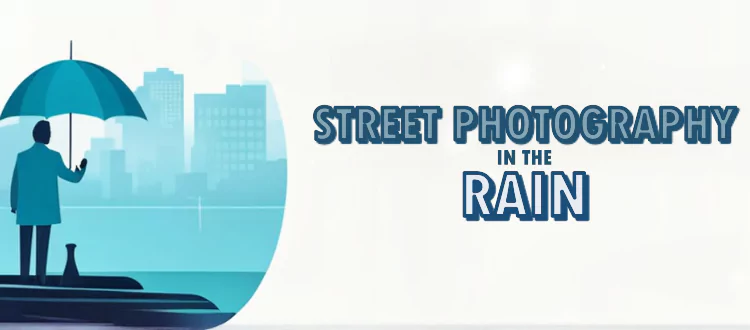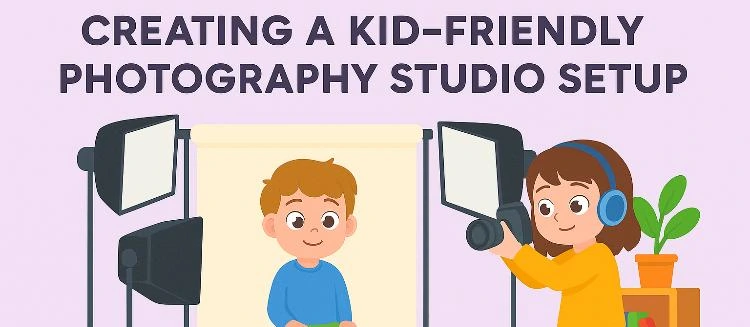Theodore Lowe, Ap #867-859
Sit Rd, Azusa New York
Find us here
Street Photography in the Rain: Tips & Tricks

Rain transforms ordinary streets into magical scenes. Puddles create stunning reflections, while wet surfaces amplify colors and contrast. Capture the drama of raindrops falling, umbrellas, and bustling pedestrians. Use a fast shutter speed to freeze motion and a wide aperture for depth of field.
Protect your gear with a rain cover and keep extra batteries handy. Experiment with different angles and compositions to find intriguing perspectives. Embrace the unexpected elements rain introduces, making each shot unique. Rainy conditions challenge you to think creatively and adapt quickly, resulting in striking, memorable street photographs.
Choosing The Right Gear
Choosing the right gear is essential for street photography in the rain. The weather conditions can be harsh. Your equipment must withstand the elements. Below are tips to help you select the best gear for rainy day shoots.
Camera Selection
Your camera choice matters a lot in rainy conditions. A weather-sealed camera is ideal. It protects against moisture and dust. Look for models with strong build quality. Popular options include the Canon EOS R5 and Nikon Z6 II. These cameras offer great performance and durability.
Consider a compact camera for more mobility. The Sony RX100 VII is a good choice. It’s lightweight and easy to carry. This makes it convenient for street photography.
Weather-resistant Equipment
Use weather-resistant lenses to protect your gear. Lenses like the Fujinon XF 16-55mm are excellent. They have weather sealing to keep out moisture.
Invest in a rain cover for your camera. Brands like Peak Design offer reliable options. A rain cover keeps your camera dry during shoots.
Don't forget a sturdy tripod. The Manfrotto Befree Advanced is a solid choice. It's lightweight and weather-resistant. This tripod ensures stability in wet conditions.
|
Equipment |
Recommended Models |
|---|---|
|
Weather-Sealed Camera |
Canon EOS R5, Nikon Z6 II |
|
Compact Camera |
Sony RX100 VII |
|
Weather-Resistant Lens |
Fujinon XF 16-55mm |
|
Rain Cover |
Peak Design Rain Cover |
|
Sturdy Tripod |
Manfrotto Befree Advanced |
By choosing the right gear, you can capture stunning photos in the rain. Remember to check the weather resistance of your equipment. This ensures it will last and perform well.
Lens Considerations
Street photography in the rain presents unique challenges and opportunities. Choosing the right lens is crucial for capturing the essence of rainy streets. This section will help you understand which lenses work best for street photography in wet conditions.
Prime Vs. Zoom
Prime lenses are known for their sharpness and wide apertures. They are excellent for low-light conditions and can create beautiful bokeh effects. Rainy days often come with low light, making primes a good choice.
On the other hand, zoom lenses offer flexibility. They allow you to change focal lengths without switching lenses. This can be very helpful in unpredictable weather.
Here’s a quick comparison of prime vs. zoom lenses for street photography in the rain:
|
Prime Lenses |
Zoom Lenses |
|---|---|
|
Better image quality |
Flexible focal lengths |
|
Wider apertures |
Convenient in changing conditions |
|
Lightweight |
Heavier |
Best Focal Lengths
Choosing the right focal length can make a big difference. Here are some recommended focal lengths for street photography in the rain:
-
35mm: Perfect for wide-angle shots and capturing more of the scene. It’s versatile and great for storytelling.
-
50mm: Known as the "nifty fifty," this focal length is close to human vision. It’s great for portraits and isolating subjects.
-
85mm: Ideal for tight portraits and capturing details. It provides good background separation and works well in low light.
Each focal length serves a different purpose. Consider what you want to capture before heading out.
Protecting Your Equipment
Street photography in the rain brings unique challenges. The biggest challenge is protecting your gear. Rain can damage cameras, lenses, and accessories. Here are some essential tips to keep your equipment safe and dry.
Rain Covers
Rain covers are essential for street photographers. They shield your camera from rain. High-quality rain covers are lightweight and easy to use.
Look for covers with adjustable straps. This helps fit different camera sizes. Consider clear covers. They allow you to see the camera controls. Some even have a lens cover extension. This keeps the lens dry too.
Using a rain cover is simple. Just slip it over your camera. Tighten the straps. Make sure all parts are covered. Your camera is now protected from rain.
Waterproof Bags
Waterproof bags provide extra protection. They keep your gear safe during downpours. Choose a bag with multiple compartments. This helps organize your equipment.
Look for bags with padded interiors. This cushions your gear from impacts. Sealed zippers are a great feature. They prevent water from seeping in. Some waterproof bags have built-in rain covers. This offers double protection.
|
Feature |
Benefit |
|---|---|
|
Multiple Compartments |
Organizes Equipment |
|
Padded Interiors |
Cushions from Impacts |
|
Sealed Zippers |
Prevents Water Seepage |
|
Built-in Rain Cover |
Double Protection |
Using a waterproof bag is easy. Place your gear inside. Zip up the bag. Your equipment stays dry and safe.
Optimal Camera Settings
Capturing street photography in the rain can be magical. The reflections, the mood, and the ambiance add a unique charm. To make the most of this, you'll need the optimal camera settings. Here are some essential tips and tricks for getting the perfect shot.
Shutter Speed
Shutter speed is crucial in rain photography. A fast shutter speed freezes the raindrops, capturing their shape. Use a speed of at least 1/250s.
If you want to capture the motion of the rain, use a slower shutter speed. Speeds like 1/60s or 1/30s can create a beautiful blur effect.
Aperture & Iso
Balancing aperture and ISO is key. A wide aperture (like f/2.8) allows more light. This is useful on dark, rainy days.
For sharper images, choose a smaller aperture (like f/8 or f/11). This increases the depth of field.
Use a low ISO (like 100 or 200) to reduce noise. In low light, increase ISO cautiously. High ISO can introduce noise, which may ruin the shot.
|
Setting |
Recommendation |
|---|---|
|
Shutter Speed |
1/250s for freezing rain, 1/60s for motion blur |
|
Aperture |
f/2.8 for more light, f/8 for depth |
|
ISO |
100-200 for low noise |
Capturing Reflections
Rainy days offer unique opportunities for street photographers. Reflections can add depth and interest to your shots. With some tips, you can capture stunning reflection photos. Let's dive into puddle and window reflections.
Puddle Reflections
Puddles can act like natural mirrors. They reflect scenes around them, creating fascinating compositions.
-
Find large puddles: Bigger puddles offer more reflection surface.
-
Get low: Position your camera close to the water.
-
Use wide-angle lens: Capture more of the scene and reflection.
-
Look for symmetry: Symmetrical compositions are visually appealing.
-
Include vibrant colors: Colors stand out against the gray of rainy days.
Experiment with different angles. Move around the puddle to find the best reflection.
Window Reflections
Windows offer another way to capture reflections. Buildings with large windows are perfect for this.
-
Look for interesting scenes: Find scenes reflected in the glass.
-
Use a polarizing filter: Reduce glare and enhance reflection clarity.
-
Shoot at an angle: Avoid direct shots for better reflections.
-
Play with focus: Focus on the reflection or the scene behind.
-
Include people: Reflections of people add a dynamic element.
Windows can offer layered compositions. Combine reflections with what's inside the window for complex shots.
Playing With Light
Street photography in the rain offers a unique opportunity to play with light. The reflections and droplets create dynamic and magical scenes. This section will explore how to use streetlights, neon signs, and natural light to elevate your rainy street photos.
Streetlights & Neon Signs
Streetlights and neon signs can transform a rainy street into a vibrant scene. Their light reflects off wet surfaces, creating stunning effects. Look for puddles that capture these reflections. Position yourself to include both the light source and its reflection in your frame.
-
Streetlights: Use them to highlight textures on wet surfaces.
-
Neon Signs: Capture their colors bouncing off rain-soaked streets.
-
Reflections: Find puddles that mirror the lights around them.
Photographing under streetlights adds a dramatic flair. Neon signs bring a burst of color to your shots. Both create a captivating contrast against the dark, rainy backdrop.
Natural Light
Natural light during rainstorms can be soft and diffused. This light creates a moody atmosphere perfect for street photography. Look for moments when the rain softens, allowing more natural light to seep through the clouds.
|
Condition |
Effect |
Tip |
|---|---|---|
|
Overcast |
Soft, even lighting |
Capture details without harsh shadows |
|
Light Rain |
Subtle reflections |
Focus on reflective surfaces |
|
Heavy Rain |
Dynamic, dramatic scenes |
Use a fast shutter speed to freeze raindrops |
Natural light can vary greatly during rain. Pay attention to the light changes and adjust your camera settings accordingly. Embrace the moodiness that natural light brings to your rainy street photos.
Composing Your Shots
Street photography in the rain offers unique opportunities. Raindrops, puddles, and reflections create dynamic compositions. To capture these scenes effectively, focus on composing your shots. Here are some tips for framing and using leading lines.
Framing Techniques
Framing can transform your street photos. Use doorways, windows, and arches. These elements direct attention to your subject. Look for natural frames, like tree branches or even umbrellas. These add depth and context to your shots. Experiment with different angles to find the best frame.
|
Element |
Usage |
|---|---|
|
Doorways |
Directs focus to the subject |
|
Windows |
Adds depth and context |
|
Tree Branches |
Creates natural frames |
Leading Lines
Leading lines guide the viewer's eye. Streets, sidewalks, and railings work well. These elements lead to your subject, creating a path for the viewer. Use crosswalks for dramatic effects. Wet streets reflect light, enhancing these lines. Pay attention to the direction of the lines. Ensure they point to the main subject.
-
Streets and sidewalks
-
Railings and fences
-
Crosswalks
Conclusion
Rain transforms the city into a photographer's dream. Mastering street photography in these conditions yields truly unique and captivating results. Embrace the weather, experiment with new techniques, and capture the fleeting moments that others miss. With practice and creativity, your rainy day photography will stand out from the crowd. Keep your gear dry, stay inspired, and enjoy the process of seeing the city in a new light.
Related blog posts
Creating a Kid-Friendly Studio Setup: Ultimate Guide
Imagine capturing the pure joy and energy of children in your clothing photography. Sounds exciting, right?


